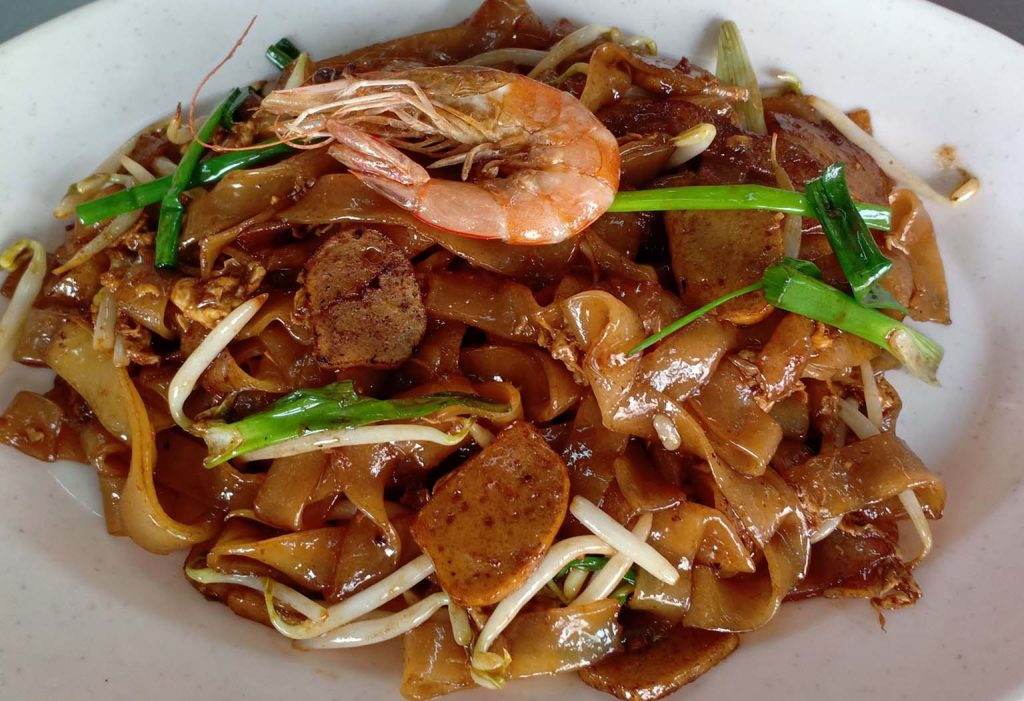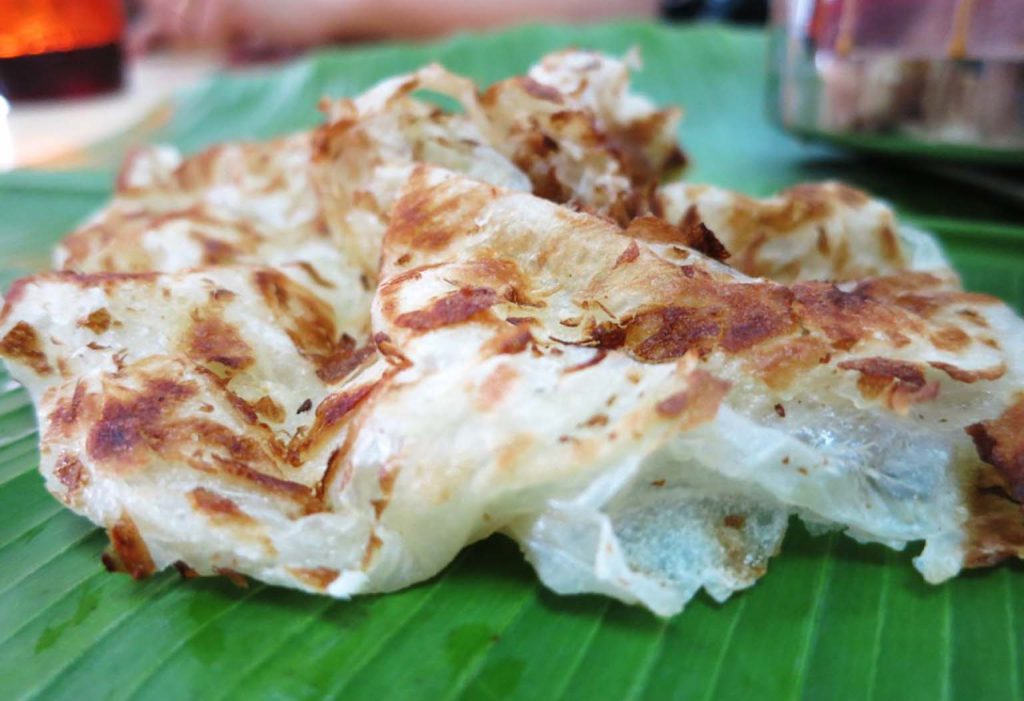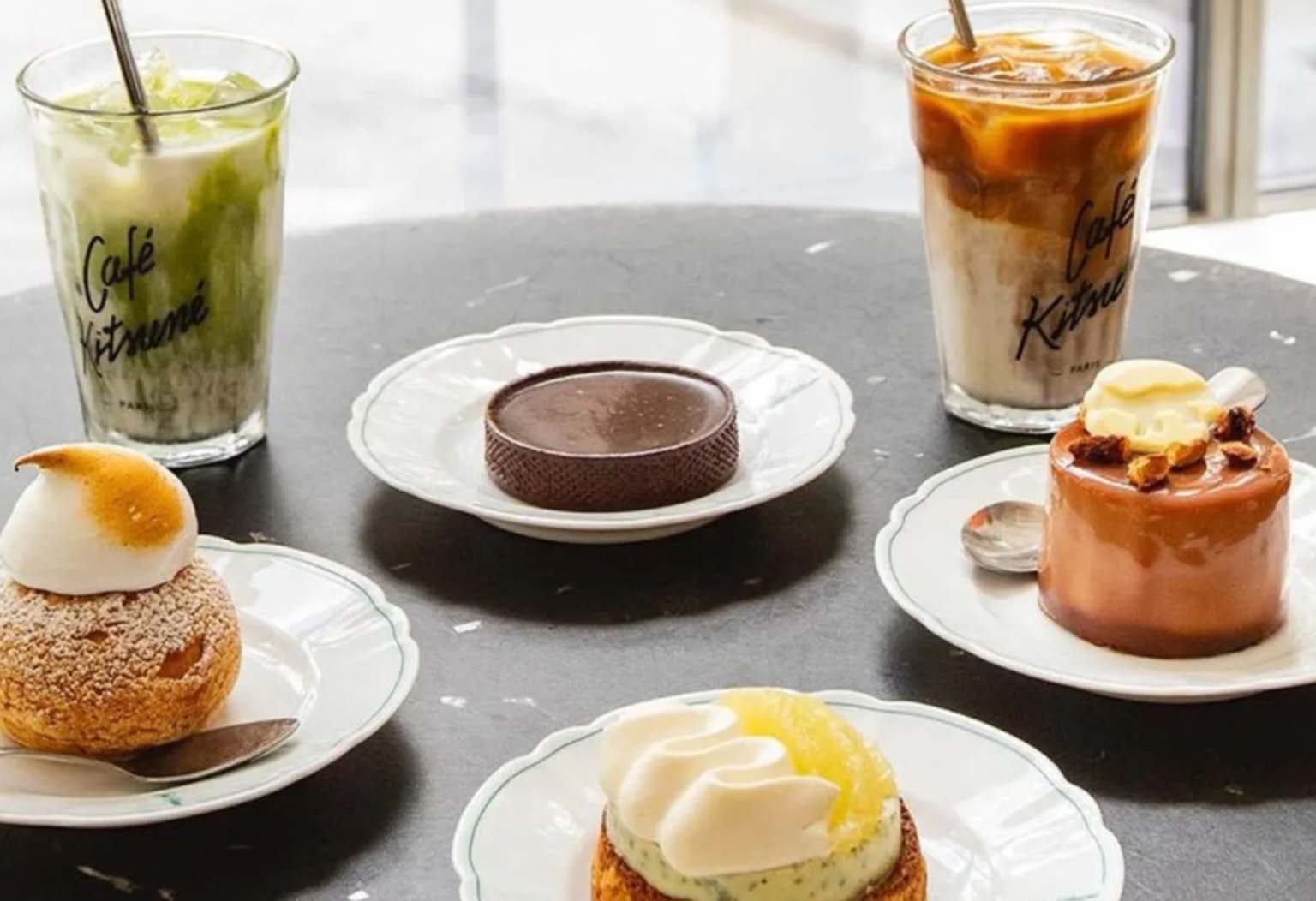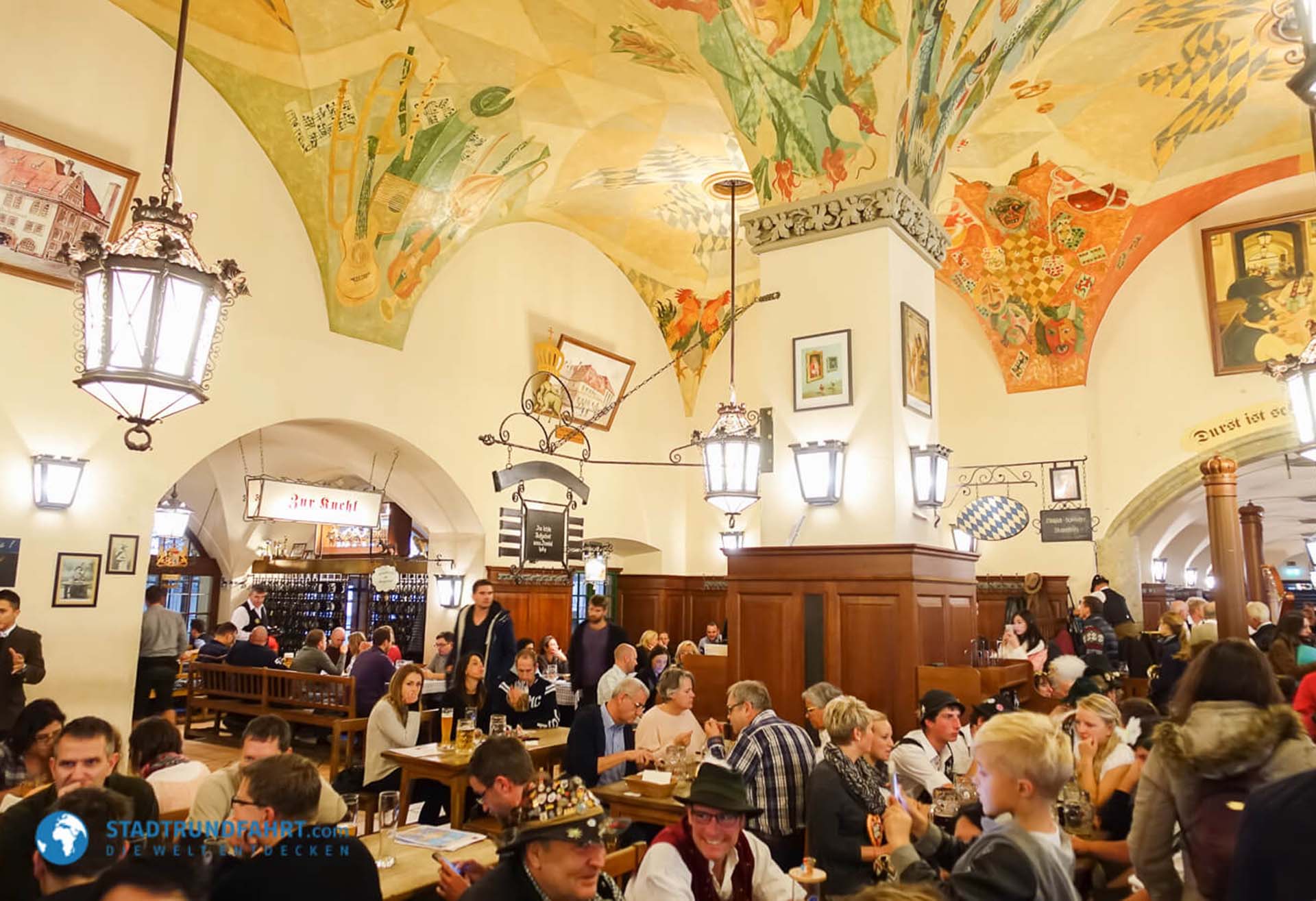Nasi Lemak at Village Park Restaurant
Entering Village Park Restaurant feels like stepping into a bustling culinary oasis tucked away in the heart of Damansara Uptown. As I push open the door, I’m immediately greeted by the tantalizing aroma of freshly brewed coffee wafting through the air, mingling with the fragrant scent of coconut-infused rice. The vibrant chatter of diners adds to the lively atmosphere, setting the stage for what promises to be a memorable gastronomic experience.
Navigating through the throng of patrons, I find myself drawn to the display counter showcasing an array of colorful dishes, each more tempting than the last. But it’s the sight of the Nasi Lemak that truly captivates me – a symphony of colors and textures laid out on banana leaves, inviting me to partake in Malaysia’s culinary heritage.
Opting for an early visit to beat the crowds, I secure a table and eagerly await the arrival of my Nasi Lemak. As the plate is placed before me, I’m struck by the artful presentation – the glistening grains of coconut-infused rice, the vibrant hues of the sambal, and the enticing array of accompaniments arranged with precision.
Taking my first bite, I’m transported to a culinary paradise. The rice, delicately infused with coconut milk, melts in my mouth, imparting a subtle sweetness that perfectly complements the fiery kick of the sambal. Each component – from the crispy anchovies to the creamy hard-boiled eggs – harmonizes effortlessly, creating a symphony of flavors that dance on my palate.
Despite the bustling ambiance, the attentive staff ensures that every diner is catered to with care and efficiency. As I linger over my meal, savoring every last morsel, I can’t help but marvel at the culinary prowess on display. Village Park Restaurant isn’t just a dining destination – it’s a celebration of Malaysia’s rich culinary heritage, a testament to the artistry and passion that goes into every dish.
Leaving the restaurant, my senses buzzing with satisfaction, I know that I’ve experienced something truly special. The memory of that exquisite Nasi Lemak will linger with me long after I’ve left Damansara Uptown, a reminder of the unparalleled delights that await in the vibrant tapestry of Malaysian cuisine.
Pros:
- Authentic representation of Malaysian flavors.
- Generous portions at reasonable prices.
- Despite the bustling atmosphere, service remains efficient and amicable.
Cons:
- Limited seating capacity may result in extended wait times during peak hours.
- Parking can pose a challenge, particularly on weekends.
Given Village Park’s policy of no reservations, strategizing one’s visit becomes imperative. Arriving early ensures a seamless dining experience without undue delays.
Char Kway Teow at Restoran Seng Lee
Stepping into Restoran Seng Lee feels like entering a portal to the heart of Kuala Lumpur’s bustling street food scene. Located snugly in the labyrinthine lanes of Petaling Street, this unassuming eatery exudes an irresistible charm that beckons both locals and travelers alike. As I push open the creaky wooden door, I’m greeted by the intoxicating aroma of sizzling noodles and the rhythmic clang of metal against wok.
The interior is a tableau of nostalgia, with faded photographs adorning the walls and weathered tables bearing the marks of countless meals shared. Despite the modest surroundings, there’s an undeniable energy that permeates the air, a tangible sense of anticipation for the culinary delights that await.
Taking a seat amidst the throng of diners, I eagerly peruse the menu, though my heart is already set on the legendary Char Kway Teow. As I await its arrival, I can’t help but marvel at the bustling activity in the open kitchen, where skilled chefs deftly maneuver their woks with practiced precision, sending flames leaping into the air.
My plate of Char Kway Teow arrives, and my senses are immediately overwhelmed by the sight and aroma before me. The dish is a masterpiece of contrasts – the glossy strands of rice noodles glisten with a sheen of oil, while the medley of ingredients beckons invitingly from within. Succulent prawns, tender slices of chicken, plump bean sprouts, and smoky Chinese sausage mingle together in a tantalizing embrace, each component contributing its own unique flavor and texture to the symphony.

Taking my first bite, I’m transported to the bustling streets of Kuala Lumpur, where the aroma of sizzling noodles mingles with the chatter of street vendors and the laughter of passersby. The flavors are bold and robust, with hints of charred smokiness from the searing heat of the wok and a subtle sweetness that lingers on the palate.
Despite the frenetic pace of the kitchen, the service is efficient and attentive, with servers weaving effortlessly between tables to ensure that every diner is well taken care of. As I savor each mouthful of Char Kway Teow, I can’t help but marvel at the culinary alchemy on display – a testament to the rich tapestry of flavors that defines Malaysian cuisine.
Leaving Restoran Seng Lee, my taste buds tingling with satisfaction, I know that I’ve experienced something truly special. The memory of that exquisite Char Kway Teow will linger with me long after I’ve left Petaling Street, a reminder of the unparalleled delights that await in the vibrant culinary landscape of Kuala Lumpur.
Pros:
- Authentic street food experience imbued with local charm.
- Wallet-friendly prices that cater to every budget.
- Portions are generous, and spice levels are customizable to suit individual preferences.
Cons:
- Limited seating arrangements and absence of air-conditioning may deter comfort-seeking diners.
- Service may be brisk during peak hours, necessitating patience.
Restoran Seng Lee operates on a first-come, first-served basis, rendering reservations redundant. However, the swift turnover ensures minimal waiting times, enabling patrons to dive into their culinary odyssey without delay.
Banana Leaf Rice at Sri Nirwana Maju
As I step into Sri Nirwana Maju, the vibrant suburb of Bangsar seems to fade away, replaced by the bustling energy and intoxicating aromas of South Indian cuisine. The air is thick with the heady scent of spices and the lively chatter of diners engaged in their own gastronomic odyssey. I’m immediately enveloped in the convivial atmosphere, the tantalizing promise of an authentic Banana Leaf Rice experience beckoning me forward.
Navigating through the throng of eager patrons, I find myself drawn to a table adorned with vibrant banana leaves, their glossy surfaces reflecting the warm glow of overhead lights. The ceremonious ritual begins as a friendly server approaches, deftly unfurling a banana leaf before me with a flourish. The verdant surface serves as a canvas for the culinary masterpiece that is about to unfold.
With practiced precision, generous portions of steaming rice are heaped onto the leaf, their fluffy grains releasing a tantalizing aroma that tickles my senses. Arranged around the rice are an array of colorful side dishes – from vibrant curries to crisp papadums – each promising a symphony of flavors to delight the palate.
As I take my first bite, I’m transported on a culinary journey through the sun-drenched streets of South India. The rice, infused with the subtle sweetness of coconut, provides the perfect canvas for the robust flavors of the accompanying dishes. The creamy lentil curry, fragrant with the aroma of spices, mingles harmoniously with the tangy tamarind chutney, while the crispness of the fried vegetables adds a satisfying crunch to every mouthful.
Despite the bustling ambiance, the attentive staff ensures that every diner is catered to with care and efficiency. Whether refilling my water glass or offering recommendations for additional dishes, their warm hospitality only enhances the dining experience.
As I savor each bite of Banana Leaf Rice, I’m struck by the rich tapestry of flavors that defines South Indian cuisine – a symphony of spices, textures, and aromas that dances on the palate and satisfies the soul. Leaving Sri Nirwana Maju, my taste buds tingling with satisfaction, I know that I’ve experienced something truly special – a culinary journey that transcends borders and leaves an indelible mark on the senses.
Pros:
- Authentic South Indian flavors that transport diners to the bustling streets of Chennai.
- Generous portions and unlimited refills of side dishes ensure a satiating experience.
- Despite the bustling ambiance, service remains prompt and attentive.
Cons:
- Limited parking facilities may pose a logistical challenge, particularly during peak hours.
- Long queues are not uncommon, especially on weekends and public holidays.
As Sri Nirwana Maju operates on a walk-in basis, reservations are neither available nor necessary. However, patrons are advised to plan their visit strategically to minimize waiting times and maximize their dining pleasure.
Recommendations:
Roti Canai at Raju Restaurant
For an authentic breakfast experience reminiscent of the streets of Penang, Raju Restaurant in PJ Old Town beckons with its delectable Roti Canai. This beloved eatery exudes charm, serving up flaky, crispy flatbread paired with an array of aromatic curry dips.
Pros:
- Authentic Roti Canai prepared with finesse by seasoned artisans.
- Diverse selection of curry dips to tantalize discerning palates.
- Wallet-friendly prices ensure accessibility for all.

Cons:
- Limited seating capacity may result in queues during peak hours.
- Service may be brisk to accommodate the influx of patrons.
As Raju Restaurant operates on a first-come, first-served basis, reservations are neither accepted nor necessary. However, arriving early ensures a seamless dining experience without undue delays.
Hainanese Chicken Rice at Nam Heong Chicken Rice
For a taste of Malaysia’s culinary heritage, Nam Heong Chicken Rice in Chinatown offers a delightful rendition of Hainanese Chicken Rice. This humble establishment enchants diners with its tender poached chicken, fragrant rice, and flavorful condiments.
Pros:
- Succulent chicken and fragrant rice evoke nostalgic memories of home-cooked meals.
- Flavorful chili sauce and ginger paste add depth and complexity to the dish.
- Affordable prices ensure accessibility for all budgets.
Cons:
- Limited seating arrangements may result in waiting times during peak hours.
- Queues may form, particularly during lunchtime rush hours.
Nam Heong Chicken Rice operates on a walk-in basis, rendering reservations unnecessary. However, patrons are advised to plan their visit strategically to avoid peak hours and minimize waiting times.
Assam Laksa at Petaling Street Famous Assam Laksa
For a tangy and refreshing culinary escapade, Petaling Street Famous Assam Laksa in Chinatown beckons with its robust and flavorsome Assam Laksa. This humble street stall offers a symphony of flavors, with its tangy tamarind broth, rice noodles, and fresh seafood.
Pros:
- Tangy broth bursting with layers of flavor and complexity.
- Fresh and quality ingredients elevate the dish to culinary excellence.
- Pocket-friendly prices ensure accessibility for all.
Cons:
- Limited seating arrangements may not cater to extended dining experiences.
- The tanginess of the broth may overwhelm sensitive palates.
As a street stall, Petaling Street Famous Assam Laksa operates on a first-come, first-served basis, obviating the need for reservations. Nevertheless, patrons are advised to time their visit judiciously to avoid long queues and ensure a swift culinary indulgence.
As you embark on your gastronomic expedition through the heart of Kuala Lumpur, remember to embrace the diversity, savor the flavors, and relish in the culinary wonders that await around every corner. For in the melting pot of cultures and cuisines that is Kuala Lumpur, every meal is not just a feast for the senses but a celebration of life itself. Bon appetit!




